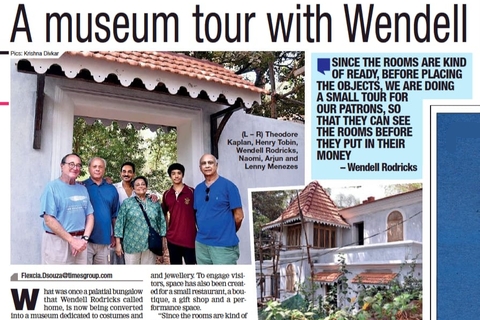Since the rooms are kind of ready, before placing the objects, we are doing a small our for our patrons, so that they can see the rooms before they put in their money.
 What was once a palatial bungalow that Wendell Rodricks called home, is now being converted into a museum dedicated to costumes and apparel down the ages in Goa. On Tuesday, Wendell took a group of visitors around the building, explaining to them how he has thematically divided the exhibits to be displayed in the different rooms.
What was once a palatial bungalow that Wendell Rodricks called home, is now being converted into a museum dedicated to costumes and apparel down the ages in Goa. On Tuesday, Wendell took a group of visitors around the building, explaining to them how he has thematically divided the exhibits to be displayed in the different rooms.
One of its kind in India, the Moda Goa Museum and Research Centre being set up in the 450-year-old heritage house in Colvale will have around 15 galleries, which will traverse through art, religion, culture and, of course, fashion to tell a story of Goa’s history. Apart from an in-house library, the museum will house a ‘gold room’ for artefacts and jewellery. To engage visitors, space has also been created for a small restaurant, a boutique, a gift shop and a performance space.
“Since the rooms are kind of ready, before placing the objects, we are doing a small our for our patrons, so that they can see the rooms before they put in their money,” said Wendell, as he took around the group of guests, explaining what the museum will look like on completion. “Lenny Menezes is a patron and on his
recommendation, we got Theodore Kaplan, an expert on textiles, especially from India, who used to work with Sotheby’s, the auction house. I was very keen that they see the museum,” says Wendell.
“It is fantastic. I am impressed with the thought that has gone into every detail,” Kaplan said, clearly impressed with what’s in store when the museum is eventually thrown open in December. “We take a trip to India every year and research and collect Indian fabrics.” he added.
By Preeti Verma Lal
From Deccan Herald, 11 September 2016

